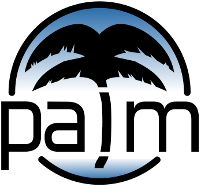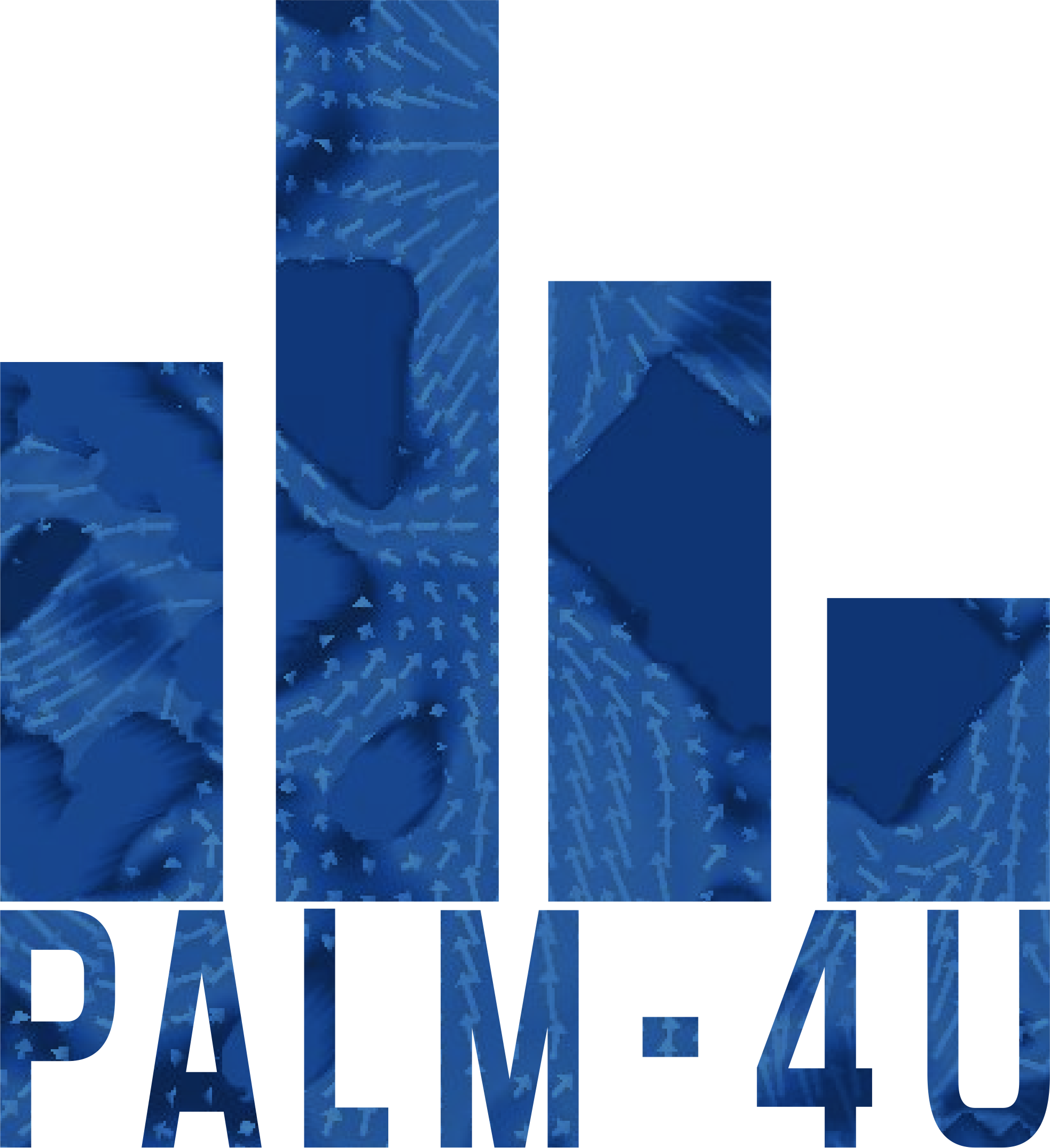| Version 195 (modified by knoop, 4 years ago) (diff) |
|---|
The PALM model system

PALM is an advanced and modern meteorological model system for atmospheric and oceanic boundary-layer flows. It has been developed as a turbulence-resolving large-eddy simulation (LES) model that is especially designed for performing on massively parallel computer architectures. Since PALM 5.0, the model is shipped along with several PALM-4U (PALM for urban applications, read: PALM for you) components that allow to employ the model for various urban applications ranging from the meso- to the microscale.
The PALM model system is free software. It can be redistributed and/or modified under the terms of the GNU General Public License (v3). We kindly request that you cite PALM in all your publications. For details, see citing PALM.
News
[ 2021-06-08 ] The next PALM seminar will take place from 4th to 8th October 2021. Due to the current COVID-19 situation, this seminar will also be held fully online.
Detailed information is given here:
PALM Seminar October 2021
A registration form can be found here:
PALM Seminar Registration Form October 2021
The PALM code is currently under extensive development, mainly within the framework of the urban climate project MOSAIK. Hence, the PALM documentation is not up-to-date at all times. We apologize for any inconvenience this may cause you. Please don't hesitate to contact us via the ticket system in case of any questions or problems. View the change log for an overview of the PALM development. Thank you for your patience.
PALM
The model PALM consists of a dynamic solver for the Navier-Stokes equations and the first law of thermodynamics. By default, the model is used in an LES mode in which the bulk of the turbulent motions in the atmospheric boundary are explicitly resolved.
Further highlights and features of the PALM core are
- excellent scaling, so far tested up to 32,000 cores
- complex terrain is realized on a Cartesian grid (allows for steep orography and vertically oriented buildings)
- online data analysis (during model runs) in order to avoid I/O bottlenecks
- interactive land surface model, coupled to the RRTMG radiation model
- wind turbine model (ADM-R) is implemented
- ocean mode with salinity equation and equation of state for seawater
- bulk cloud physics (Seifert-Beheng scheme)
- embedded parallelized Lagrangian particle model for various applications (footprint calculation, simulation of cloud droplet growth, visualization, etc.)
- interface allowing users to plug in their own code extensions without modifying the default code
- dynamic core and thermodynamics runs on multiple GPUs using CUDA-aware MPI
PALM-4U components
For urban applications, the PALM-4U components offer a variety of capabilities and features to answer research questions and to tackle issues in modern city planning related to the urban microclimate and climate change. Above all, this includes the representation of buildings on a Cartesian grid at grid spacings down to 1 m and below. PALM-4U components are shipped with PALM and are available after installation of PALM. PALM-4U components are thus also available in PALM and might be used without being limited to urban area applications. Per definition, starting from PALM version 5.0, the user runs PALM-4U as soon as buildings are placed within the model domain and at least one of the following PALM-4U components is used:
- Energy balance solvers for building and paved surfaces
- Radiative transfer within the urban canopy layer, including shadowing effects and multiple reflections between urban structures
- Wall material model for heat transfer between atmosphere and building
- Indoor climate module, predicting indoor temperature, energy demand, and waste heat
- Chemistry module for the transport and conversion of reactive species
- Model self-nesting that allows to increase either model domain size or to focus on near-surface processes
- A multi-agent system for urban residents, allowing for biometeorological studies and escape scenarios
- Quasi-automatic external forcing by COSMO-DE model data
- A Reynolds-averaged Navier Stokes (RANS) type turbulence parameterization can be used instead of LES to reduce computational costs
- Analysis tools and direct output of biometeorological quantities
The PALM-4U components have been, are and will be further developed by a consortium of institutions within the framework of the funding programme "[UC²] - Urban climate under change", funded by the German Federal Ministry of Education and Research (BMBF). For more information, see http://uc2-mosaik.org.
PALM users world map1
Attachments (7)
-
PALM-4U_logo.png
(438.9 KB) -
added by maronga 8 years ago.
PALM-4U Logo
-
Announcement_PALMseminar2019.zip
(349.3 KB) -
added by Giersch 6 years ago.
Announcement for the PALM seminar 2019
-
Announcement_PALMseminar2020.zip
(513.0 KB) -
added by raasch 6 years ago.
Announcement for the PALM seminar 2020
-
OWE_2020_LES_Maronga_3.pdf
(3.7 MB) -
added by maronga 5 years ago.
temp
- PALM_seminar_registration_form_2023-08_surname.xlsx (13.4 KB) - added by Giersch 2 years ago.
- Seminar_announcement_2023-08.pdf (448.2 KB) - added by Giersch 2 years ago.
-
PALM_Seminar_Announcement.pdf
(89.4 KB) -
added by maronga 5 weeks ago.
PALM Seminar announcement 2025

